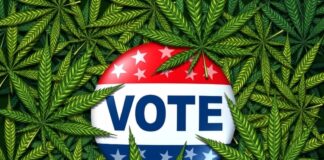
Self-reported rates of lifetime marijuana use by young people remained largely unchanged over the past year and has not increased over the better part of the last decade, according to survey data released by the University of Michigan.
Year-over-year, “the use of marijuana in all forms … by adolescents [nationwide] did not significantly change in any of the three grades [8th grade, 10th grade, and 12th grade] for lifetime use, past 12-month use, past 30-day use, [or] daily use,” the National Institute on Drug Abuse stated in a news release.
Since 2012, when Colorado and Washington became the first two states in the nation to legalize the retail adult-use market, lifetime use by adolescents has fallen approximately three percent natiowide. Annual use by young people has remained largely unchanged during this time period, while self-reported use by adolescents over the past 30-days has fallen.
NORML’s Deputy Director Paul Armentano said: “The 2020 MTF findings add to the growing body of scientific literature showing that legalization policies can be implemented in a manner that provides access for adults while simultaneously limiting youth access and misuse. Furthermore, these findings stand in sharp contrast to the sensational claims often made by legalization opponents, claims that thus far have proven to be baseless.”
The Monitoring the Future findings are consistent with numerous other studies – such as those here, here, here, and here– concluding that statewide marijuana legalization policies are not associated with any significant rise in either the use of marijuana by young people or in their ability to access it.
Additional information regarding marijuana use patterns among young people is available from the NORML fact sheet “Marijuana Regulation and Teen Use Rates.”










